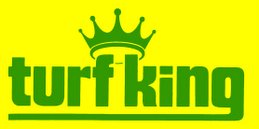Ontario Turfgrass Symposium Summary Day One
One can always learn a thing or two by listening carefully to what seminar speakers have to say. Sometimes it is the same old, same old. Yet those “same olds” are often the important foundations to what we do and how we do what we do. Hearing them again can only serve to reinforce their importance and to remind us of how to improve our lawn care service.
Dr Tom Hsiang, from the University of Guelph spoke on “Neurotic and Rusty”
After the ice breaker, he got right down to business with a talk on 2 turf diseases- Necrotic Ring Spot disease and Rust disease.
Necrotic ring spot is a lawn disease that is associated with sod and compacted soils. Certainly the conditions at new home construction sites are often not conducive to the best growing conditions for new sod. The roots of the sod have been trimmed off, and the poor soil conditions can lead to a greater chance for infection.
Necrotic ring spot infection often occurs during the spring when the soil is moist, and temperatures are between 10-20 degrees Celsius. Spores or mycelia in the thatch infect the root of susceptible lawn varieties such as Kentucky bluegrass and fine fescues. The symptoms may not appear for 12-18 months later. Those symptoms include sunken, dead or dying patches 4 inches to 2 feet across. Typically there is a green center or frog’s eye.
For control, there is no easy one shot method. Basically, Dr Hsiang says there are 3 things to do.
1. encourage deep rooting by aerating and proper nutrient applications
2. promote growth in the spring and fall, but to reduce summer succulence (soft tissues)
3. overseed with resistant grasses- perennial ryegrasses.
Rust disease is a disease that attacks perennial ryegrass and Kentucky bluegrass. During the summer, yellow-orange spots on the leaf blades produce millions of spores that are sent through the air to infect more grass blades. This disease’s symptoms are more prevalent during dry summers, even though infection occurs during wet springs.
To control rust outbreaks, Dr Hsiang recommends 2 things.
1. Increase the mowing height as this will cause the grass to grow faster
2. increase the mowing frequency.
Since the disease has 2 week latent period, the grass can outgrow the symptoms.
-------------------------------------------------------------------------------------------------------------
Nancy Hudson of the
Newfoundland and Labrador Horticulture Producers’ Council presented her research on the use of vacuums to reduce
chinch bug damage. Her research has shown that vacuuming can be an effective method of chinch bug control. By physically removing the chinch bugs from the lawn, the damage is stopped. However, the vacuums used in research plots are not practical in everyday situations. The next step is to use the results to adapt vacuums so that they can be purchased and used economically.
--------------------------------------------------------------------------------------------------------
Dr Sophie Rochefort of Viridis-Conseil presented information on the use of Endophytic Turfgrasses to control
chinch bug . An endophyte is a fungus that lives inside a plant in a symbiotic relationship. The endophyte produces alkaloids that affect insect pest responses.
The first response is antixenosis –which really means that the insect pest will show a negative preference to an endophytic grass. It will feed on a non-endophytic grass before feeding on an endophytic grass.
The second response is antibiosis – here the insect pest feeding and reproduction are affected to such a degree as to reduce damage to the host plant.
Endophytic grasses also show resistance to rust disease, better drought and stress tolerance, as well as increased plant vigour and growth.
Certain perennial ryegrasses have been shown to exhibit endophytic properties.
Click here to
request a quote online or Phone 905.318.6677 or 1.888.TURFKING
© Copyright 2008 Turf King-Hamilton. All Rights Reserved.



